Iron Age 'bling' shows wealth of northern tribes
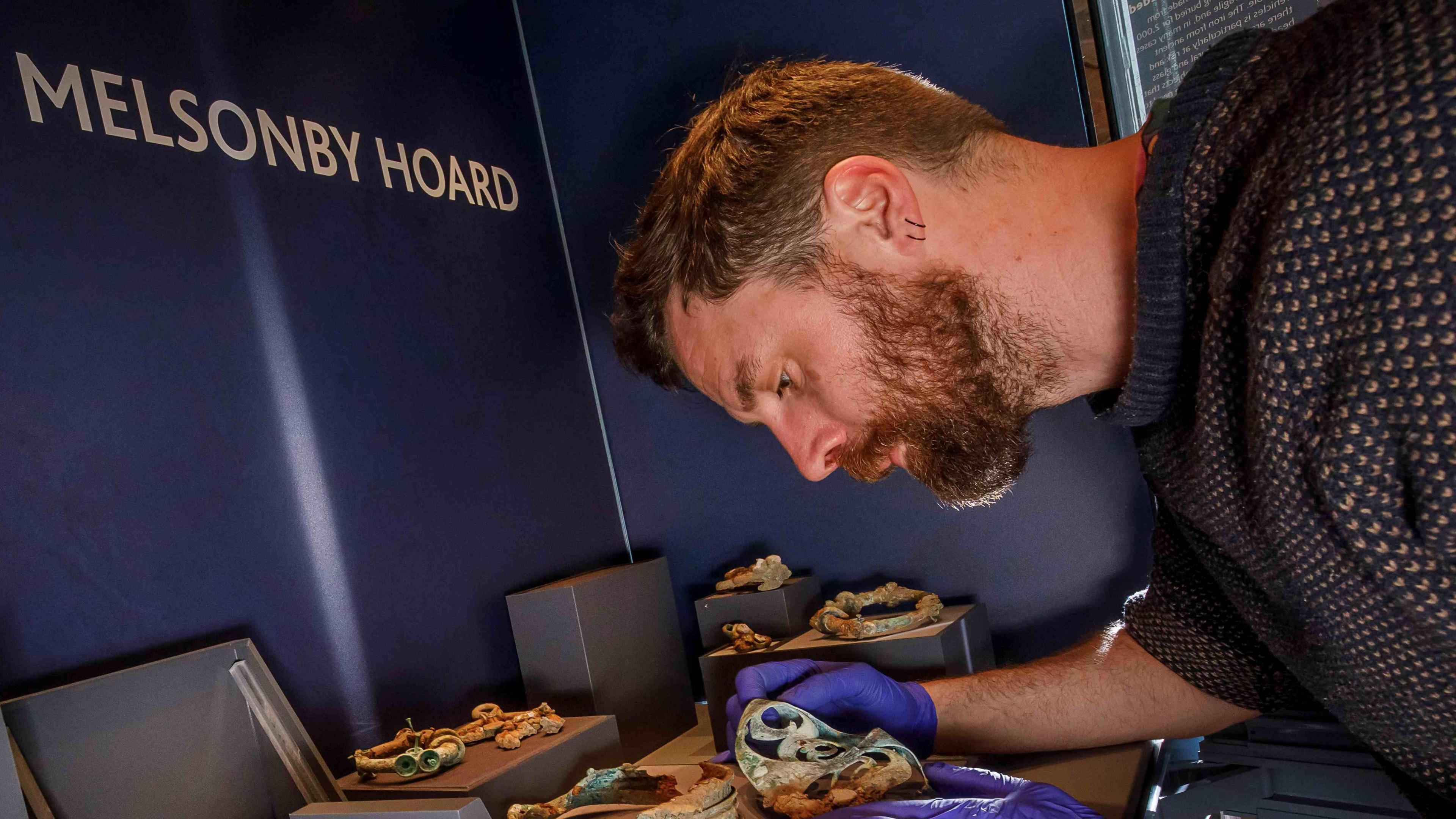
Some of the unearthed artefacts are on display at the Yorkshire Museum in York
- Published
A hoard of Iron Age "bling" unearthed in North Yorkshire was a "garish" display of wealth from tribes more powerful than previously thought, an archaeologist has said.
Dr Adam Parker from the Yorkshire Museum said the ornate decorations on artefacts found in the Melsonby Hoard, including Mediterranean coral, suggested international connections.
He said the hoard, which was discovered in a field outside Melsonby by metal detectorist Peter Heads, showed the people who buried it "had a lot more clout than we thought they did".
"It just bumps up the power and prestige of these tribal groups in North Yorkshire and it makes them even more glamorous," he said.
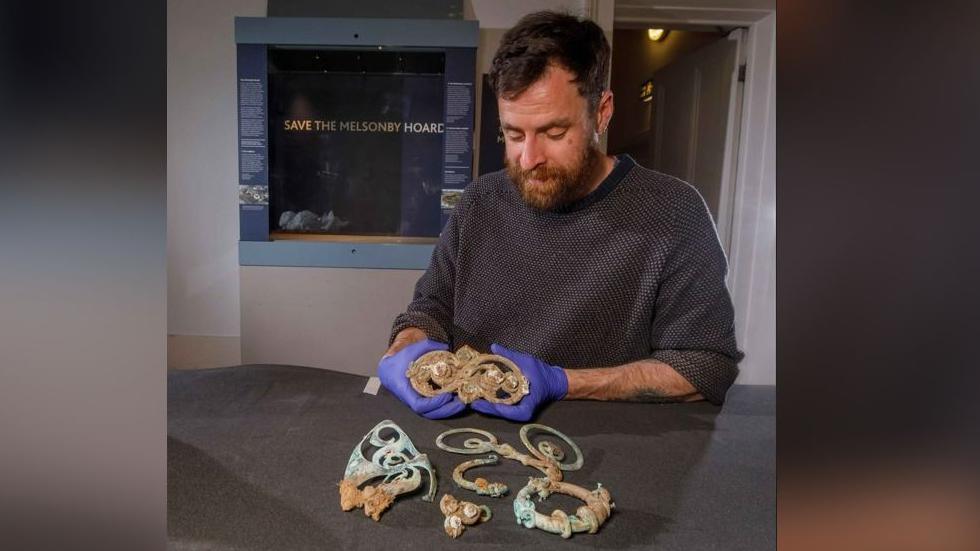
Dr Adam Parker said the ornately decorated items found in the hoard were a show of wealth and power
Speaking about some of the artefacts uncovered, Dr Parker said: "These are really fancy Iron Age chariots.
"These are absolute bling - they are garish.
"It's a show and display of wealth."
Historians believe the Melsonby Hoard to be one of the largest and most important Iron Age finds in the UK, which could lead to a "major re-evaluation" of the wealth and status of the elite living in northern Britain at the time.
Keith Emerick from Historic England said the hoard "isn't just nationally important - it's internationally important".
The metal detectorist who discovered the hoard declined to be interviewed, a spokesperson for Durham University told the BBC.
What is the Melsonby Hoard?
The Melsonby Hoard, which was excavated with the help of Durham University, includes more than 800 items believed to have been buried about 2,000 years ago.
Among the hoard are the partial remains of more than seven wagons and chariots, along with two cauldrons or vessels, horse harnesses, bridle bits and ceremonial spears.
Dr Parker said the "fancy horse harnesses" found in the hoard would have been "really bright and brassy with blue glass beads and coral" and they were "meant to be garish" as a display of wealth.
"We are blown away with the amount of coral in this hoard," he said.
Dr Parker explained that the burial of these valuable items, many of which had been broken or burnt beforehand, was "like an act of worship to somebody quite powerful like a deity".
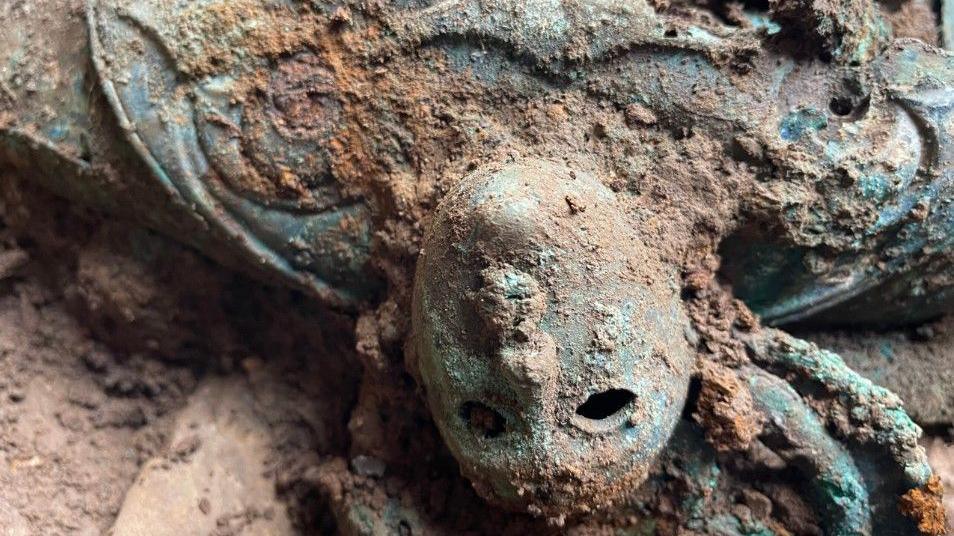
One of the cauldrons or vessels discovered has a mask-like human face on the lid
Mr Emerick said one of the two cauldrons discovered, which is decorated in both Mediterranean and Iron Age styles, was thought to be a wine mixer.
"We have some material from other chariot burials but nothing of the quality we have got here," he said.
A selection of horse-related objects from the hoard went on display at the Yorkshire Museum in York on 25 March and will remain there for 10 weeks.
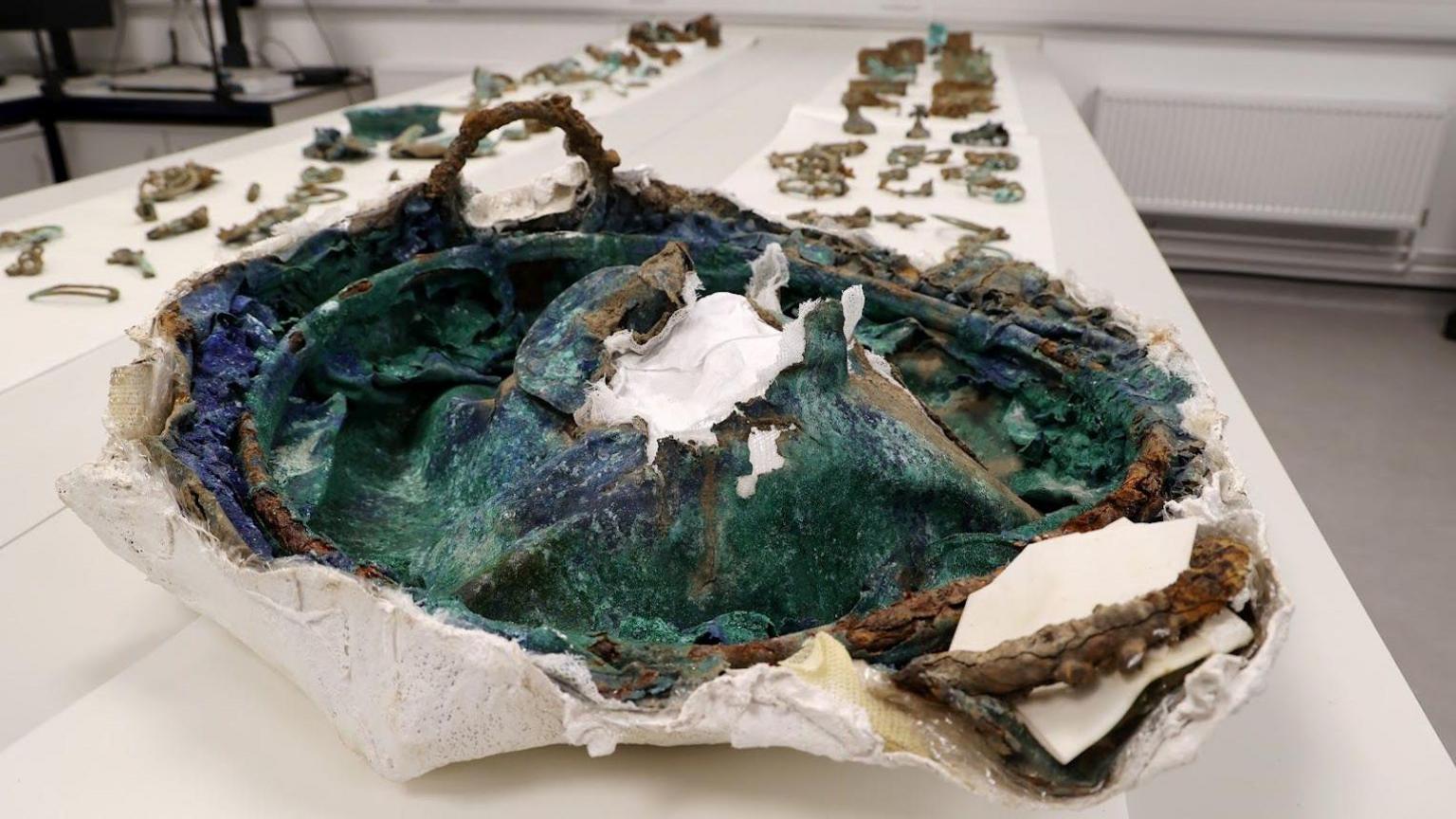
A cauldron was found buried upside down with a large stone crushing the centre inwards
Tribal queen 'staved off Roman invasion'
The site where the Melsonby Hoard was discovered is close to what was the largest Iron Age hill fort in the north of England, at Stanwick.
The fort, located near Richmond, was then the royal capital of Cartimandua, queen of the Brigantes tribe.
The Stanwick Hoard, uncovered there in 1845 and comprising 140 metal artefacts including a bronze horse head mask, could be related to the Melsonby Hoard, Mr Emerick said.
The Brigantes, meaning hill people, was a name given by the Romans to those who occupied much of what would become northern England.
Cartimandua, who ruled from around AD 43, was the first documented queen to reign in part of the British Isles, English Heritage said.
She and her husband Venutius formed an alliance with the Romans, thereby staving off an invasion during the early years of the Roman conquest.
They divorced, however, and Venutius, who had anti-Roman supporters, capitalised on Roman instability in AD 69 to become king. The Roman invasion of the north then began.
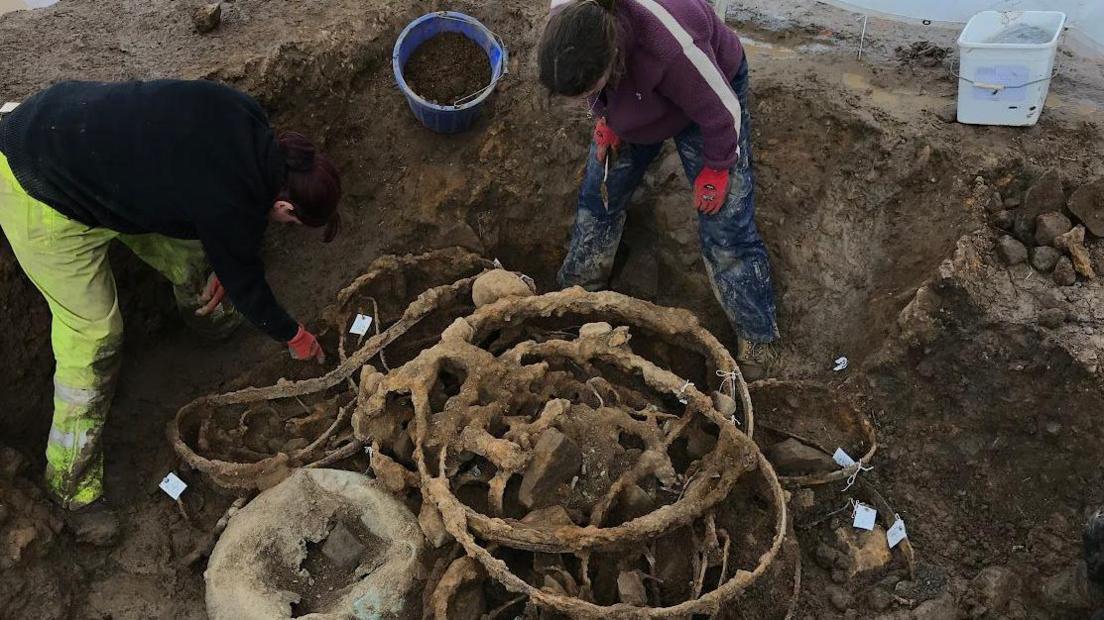
The site was discovered in December 2021 by metal detectorist Peter Heads
What is the Melsonby Hoard worth?
The hoard, which is legally categorised as treasure, has been valued at £254,000.
It will be sold and the proceeds will be split between the landowner and the metal detectorist who unearthed it.
The Yorkshire Museum has first refusal on the hoard and has launched a fundraiser.
Dr Parker said the team had around three months in which to raise the £500,000 required for the purchase and to cover the cost of conservation work.
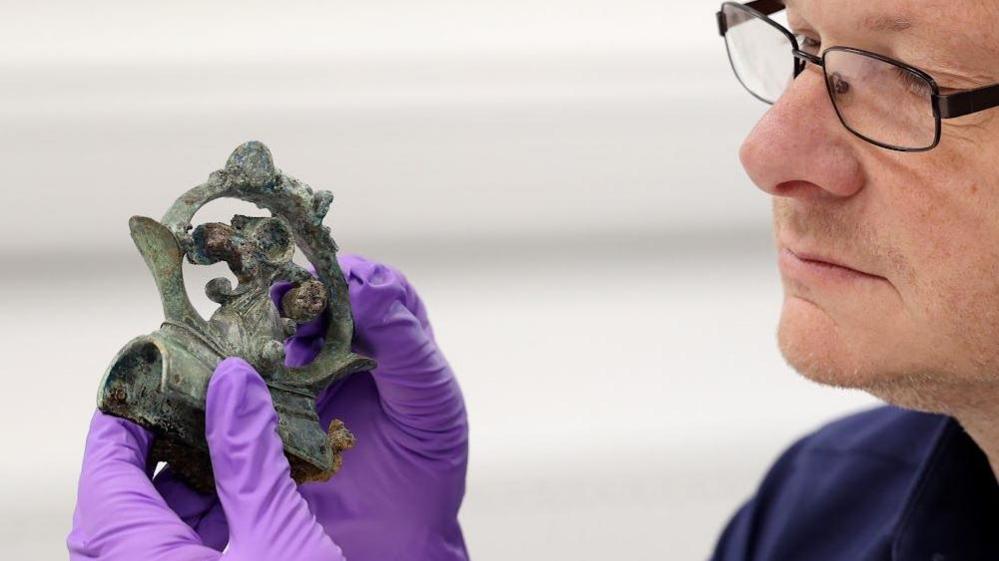
Tom Moore, head of the department of archaeology at Durham University, said the size and scale of the hoard was "exceptional"
What other Iron Age sites have been found in Yorkshire?
A number of Iron Age sites have been discovered in the region.
The European Iron Age began around 800 BC and ran until the Roman conquest, which was the year AD 43 in Britain.
Most people lived on farms or in small villages in homes called roundhouses, but others stayed in larger settlements such as the hill fort in Stanwick.
Skilled craftsmen used advanced techniques to make highly decorated metal objects like the chariots found in Melsonby.
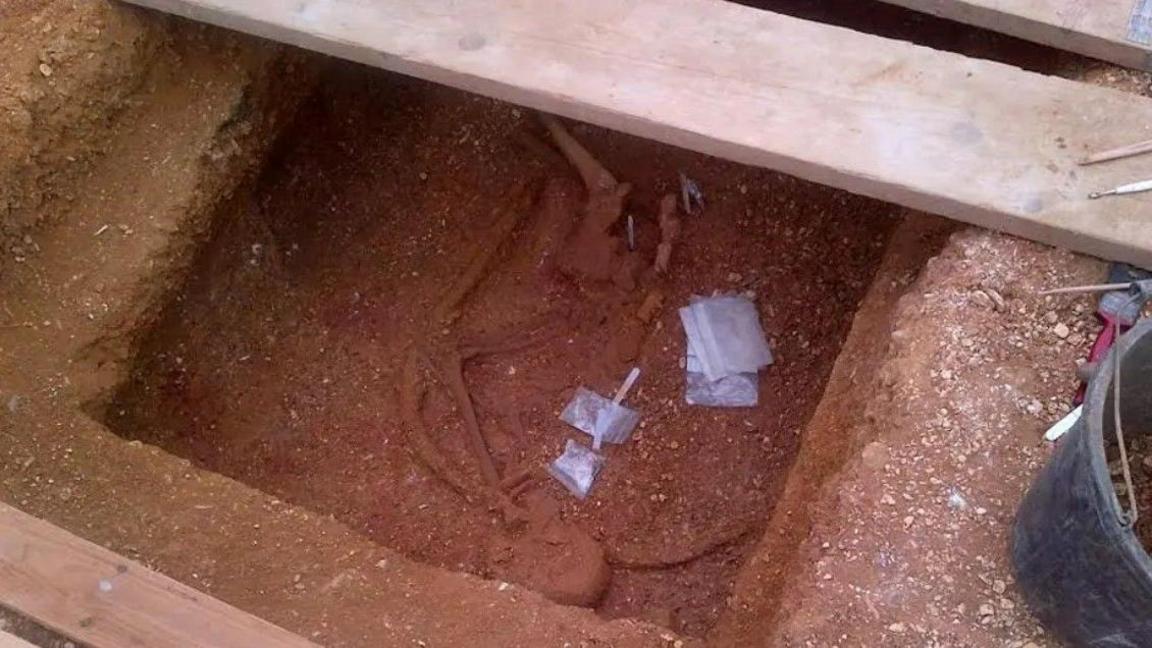
More than 70 graves known as barrows were discovered at a housing development in Pocklington
Another Iron Age site involving a chariot and horse burials was discovered on a housing development around Pocklington in 2014.
Archaeologists also discovered around 75 graves, including the remains of a "young warrior", as well as swords, spears and shields.
A large chariot burial site was found in Wetwang in the Wolds of East Yorkshire, with a number of excavations carried out there between the 1960s and 1980s.
Iron Age settlements were also discovered in Aldborough, near Boroughbridge and in Foston, near York, which was partially excavated in the 1980s.
Get in touch
Tell us which stories we should cover in Yorkshire
Listen to highlights from North Yorkshire on BBC Sounds, catch up with the latest episode of Look North.
Related topics
More like this story
- Published17 March 2016
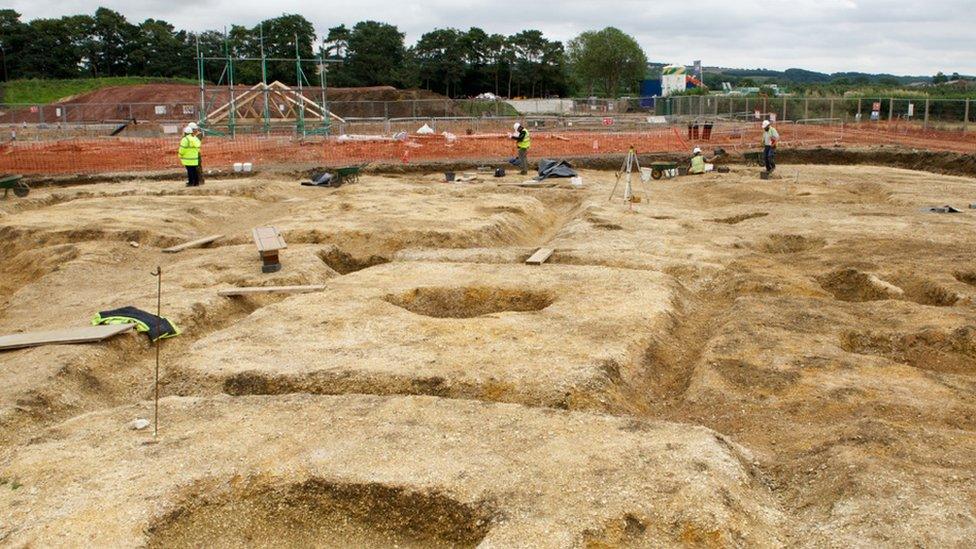
- Published23 February 2023
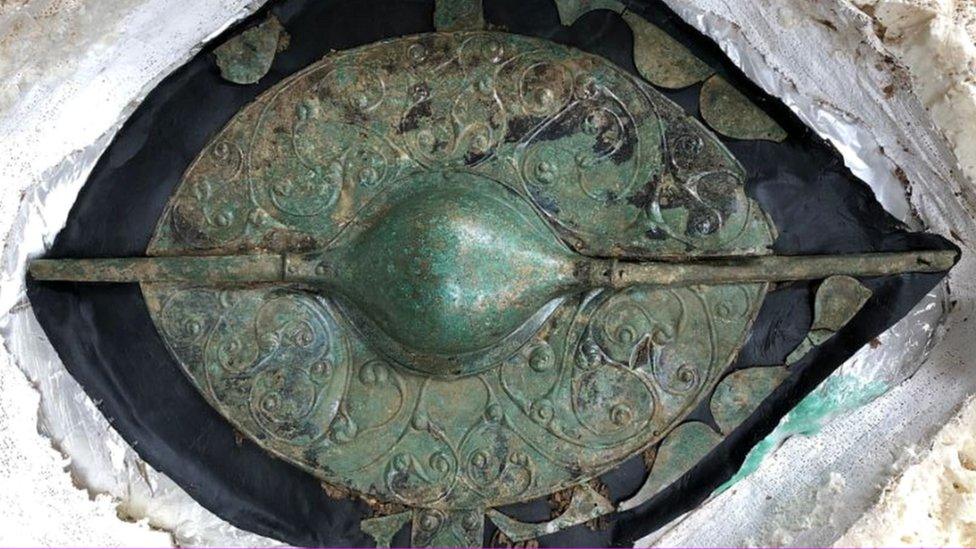
- Published20 July 2018
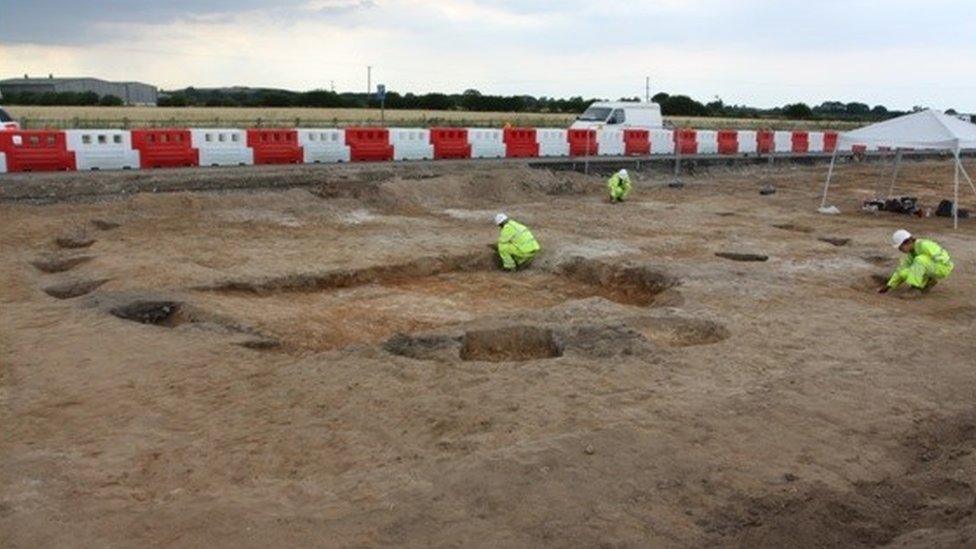
- Published10 November 2022
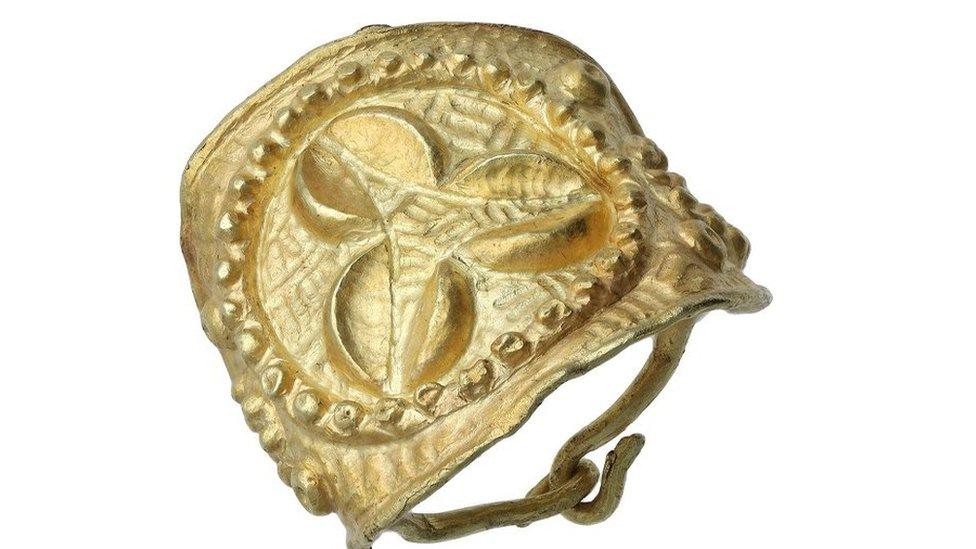
- Published12 October 2013
- Published22 November 2011
- Published1 February 2012